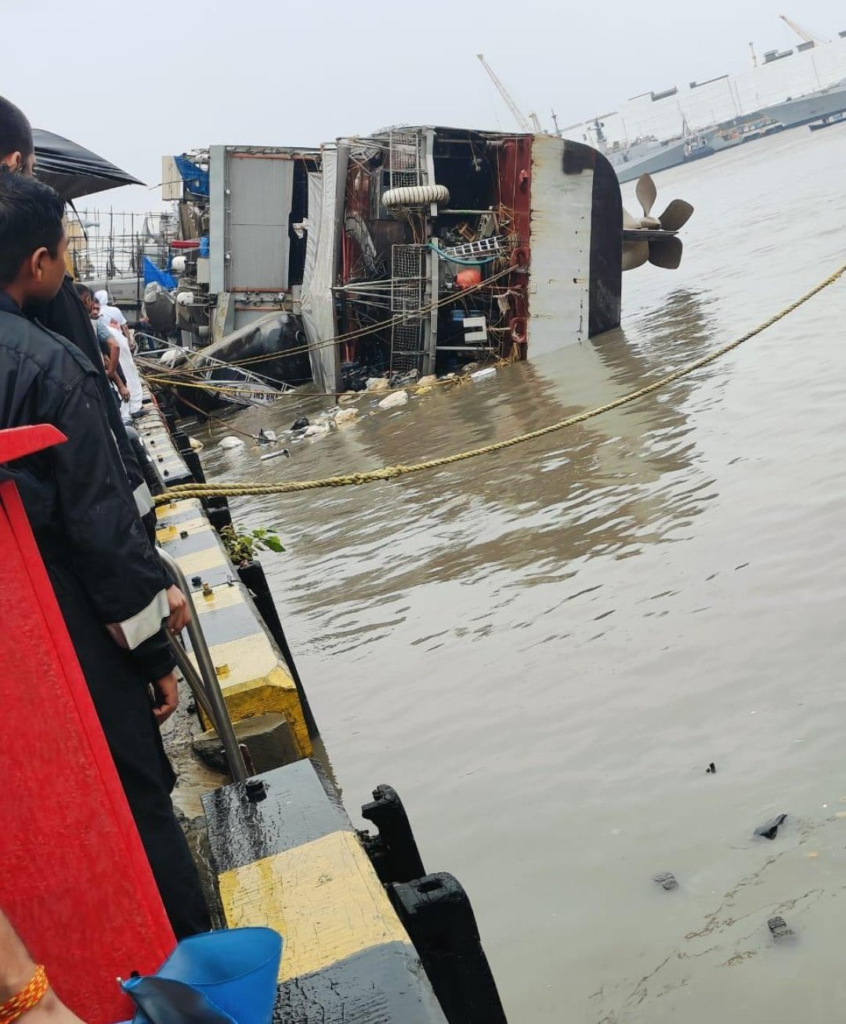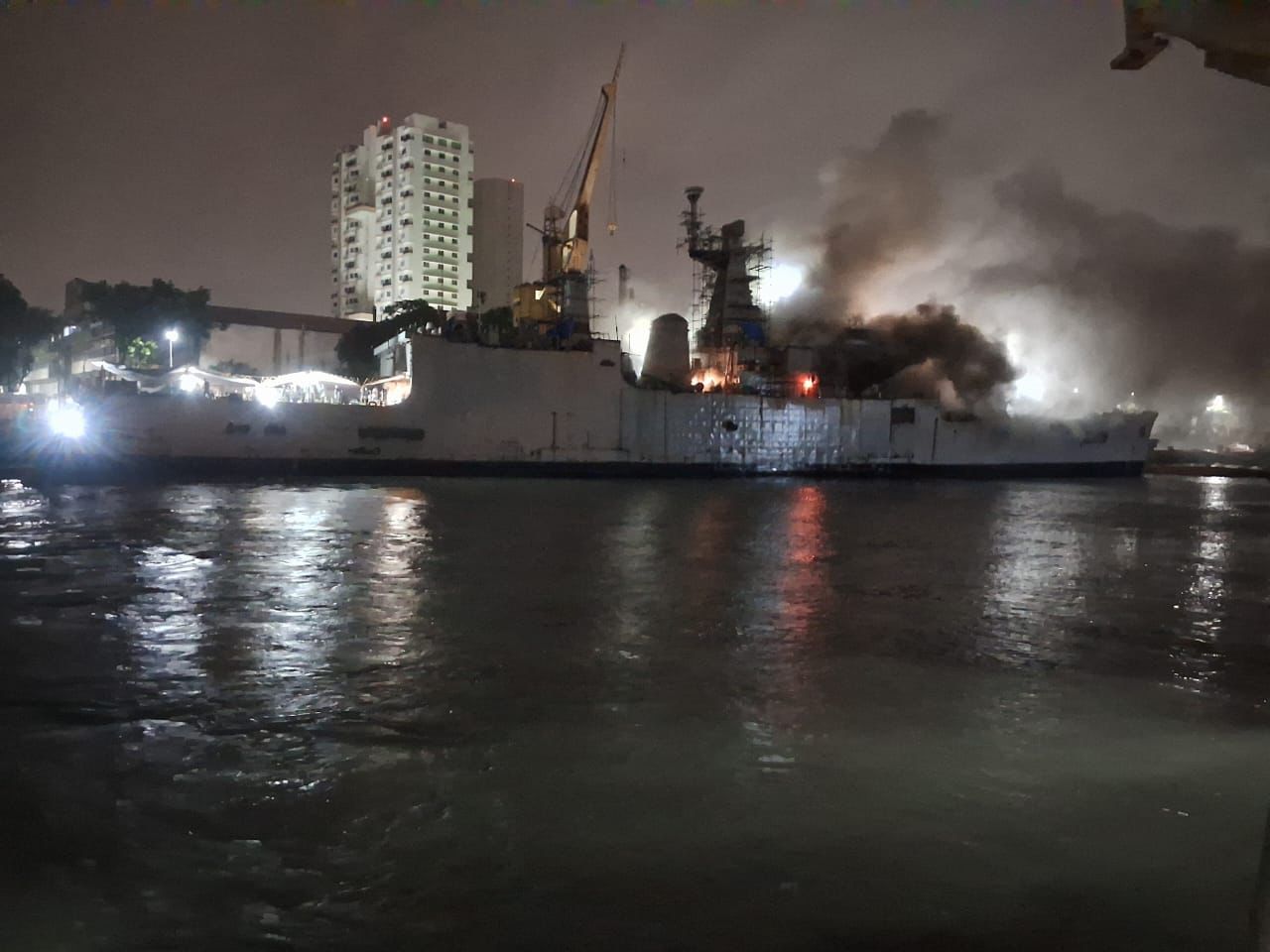The Indian Navy’s frigate, INS Brahmaputra, has suffered significant damage after a fire broke out while the ship was undergoing refit at the Naval Dockyard in Mumbai. The fire started on the evening of July 21 and, despite efforts to control it, has left the vessel listing severely to its port side. The ship still remains on its side, and one junior sailor is currently missing. The search and rescue mission has been launched but no luck so far.
Fire Control Efforts
The fire, which erupted on a Sunday, was brought under control by the ship’s crew with assistance from firefighters at the Naval Dockyard and other ships in the harbor by the morning of July 22. Following the fire, sanitization checks and assessments for residual fire risks were conducted. However, the ship experienced severe listing to the port side in the afternoon. Despite all efforts to stabilize the ship, it continued to list and now rests on one side.

Personnel and Inquiry
All personnel have been accounted for, except for one junior sailor who is still missing. The Indian Navy has ordered an inquiry to investigate the accident and determine its causes.

Historical Context
This incident marks the third significant accident involving an Indian Navy ship or submarine at the Naval Dockyard in Mumbai. Previous incidents include:
- INS Betwa (2016): A guided-missile frigate that tipped over and crashed to its side while undocking in Mumbai. The accident resulted in the death of two sailors and injuries to 14 others.
- INS Sindhurakshak (2013): The submarine sank after a series of explosions caused by a fire while it was berthed in Mumbai. The fire and subsequent ordnance blasts led to the submarine being partially submerged.

Fire Risks During Refit
Ships undergoing refit are at increased risk of fire due to the numerous ongoing repairs and the potential for “Hazardous Work” (welding or gas cutting) at multiple locations on board. While fires during refit are common, they can usually be controlled with appropriate first-aid fire extinguishers and strictly followed standard operating procedures. The problem arises when initial fire control measures are inadequate, leading to a larger fire that requires extensive firefighting efforts with water, which can affect the ship’s stability. Another risk is explosions and high temperature causing impact on structural integrity.

Stability Issues
As water is used to fight a fire, it can accumulate on the deck, adding to the ship’s weight and compromising stability. The water must be pumped out to maintain stability, but if the ship’s pumping capacity is insufficient or unavailable due to refitting procedures, the accumulated water can cause the ship to list. The fire on INS Brahmaputra, which blazed in the superstructure, likely added to the weight, leading to a dangerous listing on port side.

When a ship lists, the center of gravity (CoG) and the center of buoyancy (CoB) shift, creating a righting arm that exacerbates the list. If the CoG moves above the CoB, the ship can no longer maintain its buoyancy and may capsize. This appears to have been the case with INS Brahmaputra, as evidenced by the severe port-side list observed in the aftermath.
The event will be scrutinised under inquiry procedures and all the aspects should be evaluated including negligence, non following of SOP and even sabotage.
